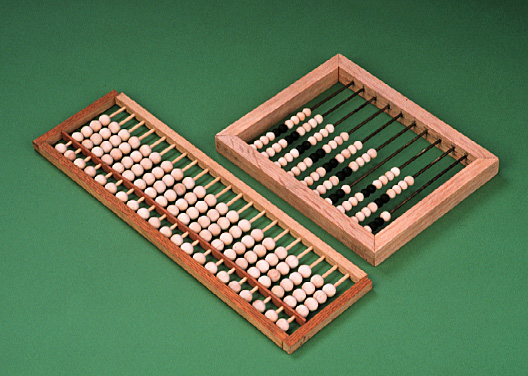Abacus, Russia and Japan, Medieval
by Amanda Richmond and Leyra Ryan

An abacus is an ancient tool used for counting, consisting of a framed set
with rods on which balls or beads are moved. The abacus has been in existence in China
since the second century BCE, although the oldest counting boards have been found in
fourth century BCE Rome. Many cultures used abaci or something similar
(such as the Inca quipu). We chose to build two abaci from different
cultures in order to compare them: the Russian (Schoty) abacus and the
Japanese (Soroban) abacus. The Russian abacus was made specifically for
counting rubles and kopeks (the Russian currency).

